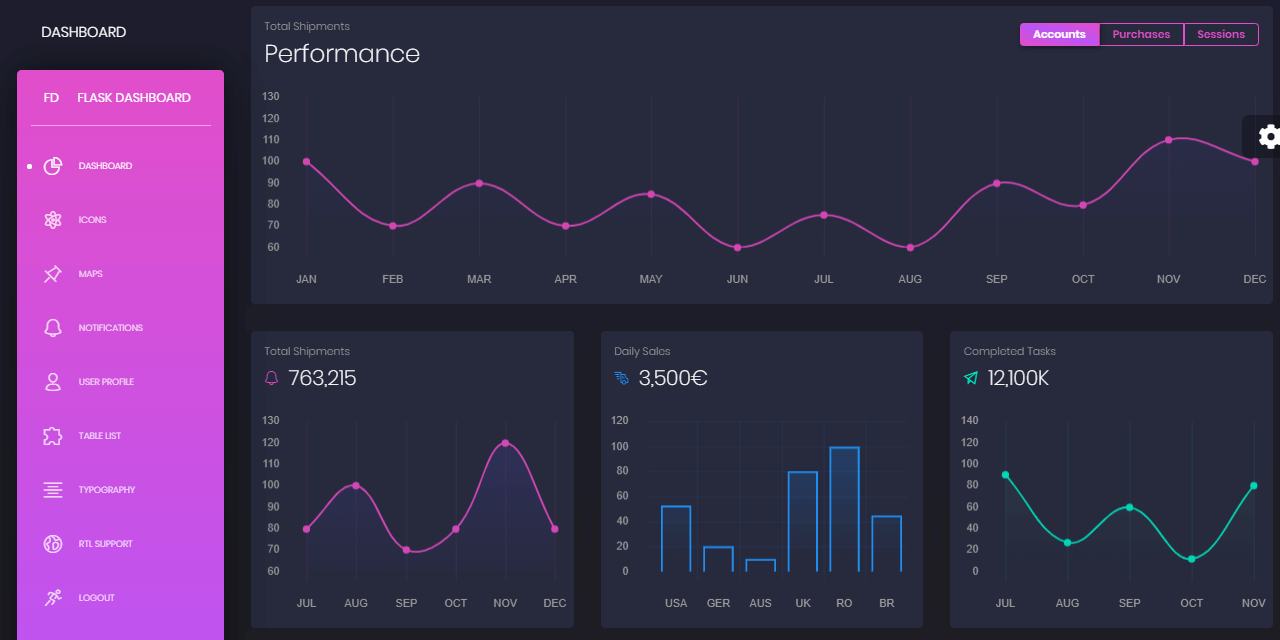What IS Flask
Short introduction to Flask
Flask is a lightweight WSGI web application framework. It is designed to make getting started quick and easy, with the ability to scale up to complex applications. Classified as a microframework, Flask is written in Python and it does not require particular tools or libraries. It has no database abstraction layer, form validation, or any other components where pre-existing third-party libraries provide common functions.
Compared to his older brother Django, Flask provides a lightweight codebase and more freedom to the developer. This might be a good thing because you have more freedom in terms of app design and structure but at the same time, this freedom might inject problems when your application becomes complex.

✅ Set up PC for Flask
Being a Python framework, Flask requires Python to run and expose his magic. Flask is compatible with Python2, Python3 (the recommended version).
Install Python
To get started working with Python3, you’ll need to have access to the Python interpreter (the console, and related tools and libraries). We can accomplish this in several ways:
- Download the installer from the official download page.
- Use a package manager like yum, apt on Linux systems
- Homebrew for MacOS users.
- Build Python from sources, a method used by super-geeks.
✅ Install Python on Windows
To install Python on our windows workstation, a few simple steps should be followed:
- Navigate to the official download page, using a web browser
- Select the installer that matches the OS (32b or 64b)
- Execute the installer (using the default options, should be enough in most of the cases)
- Test the installation by typing
python --versionin a terminal
✅ Install Python on Linux
There is a very good chance your Linux distribution has Python installed already, but it probably won’t be the latest version, and it may be Python 2 instead of Python3. To check the installed versions, just type:
$ python --version
$ python3 --version
✅ Install on CentOS
To install, you should first update your system with the yum package manager:
$ sudo yum install python36u
$ sudo yum install python36u-pip
If you still have issues set up your workstation for Python, feel free to join the Discord server and ask for support.
Other useful links
- Python 3 Installation & Setup Guide - hosted by RealPython
- How to install Python - a complete guide for many OS: Fedora, MacOS, Ubuntu
✅ Install Flask
To install Flask, we can use PIP, the official Python package manager:
$ pip install Flask
During Flask installation, other modules will be installed under-the-hood:
- Werkzeug implements WSGI, the standard Python interface between applications and servers.
- Jinja is a template language that renders the pages your application serves.
- MarkupSafe comes with Jinja. It escapes untrusted input when rendering templates to avoid injection attacks.
- ItsDangerous securely signs data to ensure its integrity. This is used to protect Flask’s session cookie.
- Click is a framework for writing command-line applications. It provides the flask command and allows adding custom management commands.
✅ Flask - A minimal Application
To code a super simple app with Flask we need to create a new file hello.py and write a few lines of code:
from flask import Flask
app = Flask(__name__)
@app.route('/')
def hello_world():
return 'Hello, from Flask!'
Above lines, saved in hello.py means:
Flaskis imported and become ready to be usedappis an object constructed byFlasklibraryappobject inherit all Flask magic@app.routeis adecoratorthat define a default route for our app- When the browser access our app, the message
Hello, from Flask!will be displayed.
How to start the app
To run the application you can either use the flask command or python’s -m switch with Flask. Before starting the app, we should export the FLASK_APP environment variable:
$ # Set the FLASK_APP environment variable
$ export FLASK_APP=run.py # Unix/Mac)
$ set FLASK_APP=run.py # Windows
$ $env:FLASK_APP = ".\run.py" # Powershell
To effectively start the app, please type:
$ flask run # this will execute hello.py file
By default, Flask will start the app on port 5000 - http://localhost:5000. By accessing this local address, we should see the message Hello, from Flask!
With this minimal example in mind, we can extend this app with more features. A possible list might be:
- add more routes
- add a database to save relevant information
- add static assets to use a Bootstrap style, for instance
- implement an authentication system
✅ Flask Dashboard Sample
Flask Dashboard - Black is a simple, open-source Flask starter coded with basic modules, database and deployment scripts for Docker, HEROKU and Gunicorn.
- Flask Dashboard - Black Design - Product page
- Flask Dashboard Black Demo - LIVE app

✅ Resources
- 👉 Access AppSeed for more starters and support
- 👉 Deploy Projects on Aws, Azure and DO via DeployPRO
- 👉 Create landing pages with Simpllo, an open-source site builder
- 👉 Build apps with Django App Generator (free service)